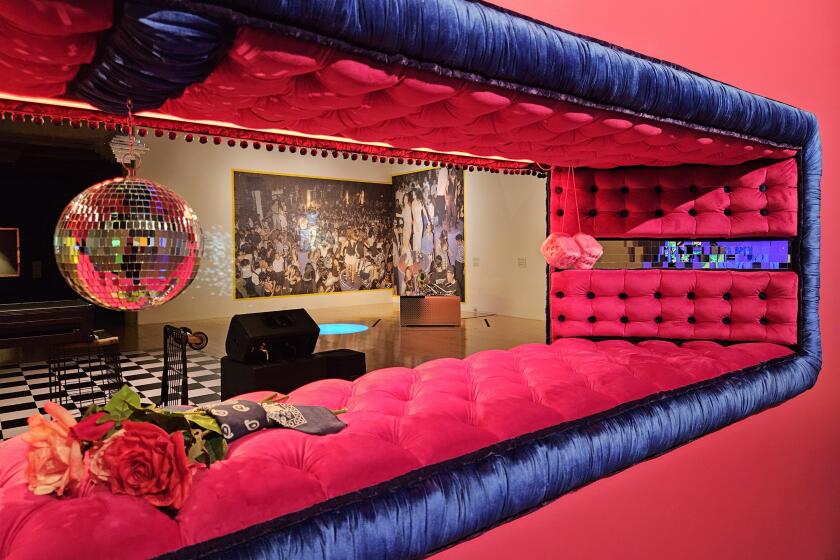Lucas Museum layoffs hit 14% of its full-time staff, including education team

- Share via
The Lucas Museum of Narrative Art has laid off 15 full-time employees, many from the organization’s education and public programming team.
The layoffs amount to 14% of the full-time staff, the museum said Tuesday. An additional seven part-time, on-call employees also had their roles eliminated, the museum said.
Two people familiar with museum operations who requested anonymity out of fear of retaliation described the scene as shocking and chaotic on Thursday morning, when employees were summoned into morning meetings with human resources, informed that their jobs had been terminated and given until 2 p.m. to vacate the premises. Personal belongings were being sent to their homes by courier, the sources said.
The museum’s curator of film programs, Bernardo Rondeau, was among those laid off. He was informed while he was at the Cannes film festival, and he posted on LinkedIn: “As of today, my role as Curator, Film Programs at the Lucas Museum of Narrative Art has been made redundant, effective immediately. I’m deeply grateful for the time I’ve spent there and for the many talented people I’ve had the privilege to work with.”
Rondeau, who previously served as the founding director of film programs at the Academy Museum of Motion Pictures, did not immediately respond to a request for comment from The Times.
A representative for the museum told The Times that the layoffs were made “due to a necessary shift of the institution’s focus to ensure we open on time next year.”
“It is a tremendously difficult decision to reorganize roles and to eliminate staff, but the restructure will allow the museum’s teams to work more efficiently to bring the museum to life for the public,” the museum said in a statement.
The Lucas Museum was founded by filmmaker George Lucas and his wife, Mellody Hobson, who searched for a location in San Francisco and Chicago before choosing Exposition Park in Los Angeles. The $1-billion museum broke ground adjacent to the Natural History Museum of Los Angeles County in 2018. The project experienced its first substantial delay in 2022, as pandemic-related supply-chain issues forced the opening originally scheduled for 2023 to be pushed back to 2025. Earlier this year its opening was again pushed back, to 2026.
In February the museum’s director and chief executive, Sandra Jackson-Dumont, stepped down after five years in charge. The museum said her role was being split into two positions, with Lucas overseeing “content direction” and former 20th Century Fox and Paramount Pictures chairman and chief executive Jim Gianopulos taking over as interim chief executive. Jackson-Dumont left on April 1.
Jackson-Dumont has not spoken publicly about her departure and did not immediately respond to requests for comment late Monday.
Sources said Lucas has been involved in curatorial decisions but did not seem engaged in the education and public programming that Jackson-Dumont had championed.
Prior to her arrival in L.A., Jackson-Dumont served as the chairwoman of education and public programs at New York’s Metropolitan Museum of Art. The San Francisco native also held education and public programming roles at the Studio Museum in Harlem, the Whitney Museum of American Art and the Seattle Art Museum, where she worked with Regan Pro, the Lucas Museum deputy director of public programs and social impact who was among those laid off last week, according to sources. Pro did not respond to a request for comment from The Times.
“Education remains a central pillar of the Lucas Museum,” the museum said in a statement Tuesday morning. “One of the main reasons Los Angeles’s Exposition Park was chosen as the location for the museum was its proximity to other museums, USC, and more than 400 schools in a five-mile radius. The importance of education for the museum can be seen by the educational spaces baked into the museum’s design from the beginning, including 10 large classroom spaces, a vast library, and two state-of-the-art theaters. Educational program plans are still in development, and we look forward to sharing more closer to opening.”
More to Read
The biggest entertainment stories
Get our big stories about Hollywood, film, television, music, arts, culture and more right in your inbox as soon as they publish.
You may occasionally receive promotional content from the Los Angeles Times.











